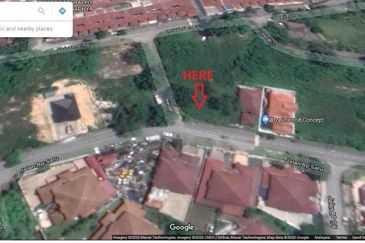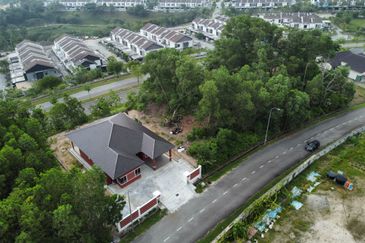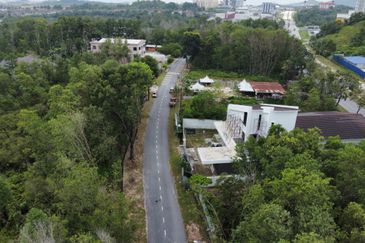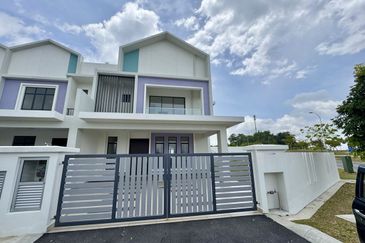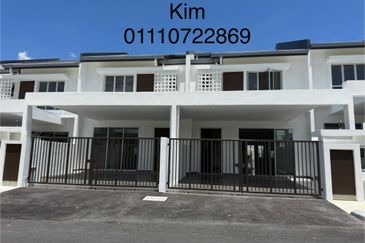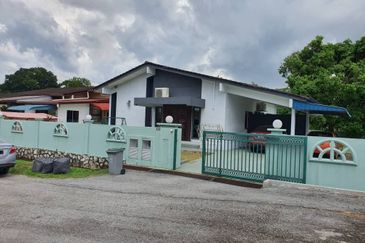
London will continue to attract Malaysian real estate investors and developers including prominent institutional investors such as the Employees Provident Fund (EPF), Lembaga Tabung Haji and Kumpulan Wang Persaraan (Diperbadankan) (KWAP), although these funds have slowed their buying activity slightly with some of them having even disposed of their real estate assets in the city such as EPF’s disposal of One Sheldon Square and 11-12 St James Square office buildings.
CBRE international investment director Christopher Pilgrim tells the TheEdgeProperty.com during a recent visit to Malaysia that he expects these funds to continue investing in London as its office market is still showing good returns.
According to CBRE, the rental yields of offices in London range from 3.5% to 4%, higher than the 2% to 3% yields in Singapore, Hong Kong and Paris. The annual average take-up of office spaces in London has been about 13 million sq ft over the past five years.
“The vacancy rate for offices in London is currently hovering at about 4%, which is lower than the 15% average in Malaysia’s Klang Valley. So from an investment point of view, you have very good protection in terms of occupiers and the market being taken up,” he says.

CBRE | WTW managing director Foo Gee Jen concurs. He says the appetite of Malaysian investment funds and real estate investment trusts for overseas properties is still present as they need to diversify their portfolios. In addition, the performance of office spaces in the country is currently relatively weak.
“I believe there will be a dip in the occupancy rate of offices in the Klang Valley this year, primarily due to the incoming supply of about 5 million sq ft bringing the overall net lettable office space to 102 million sq ft, which definitely will put pressure on rents especially of the newly built offices and ageing buildings,” he offers.
Meanwhile, Malaysian property developers are also rather actively looking for new projects or building their schemes in London, thus committing significant capital, notes Pilgrim.
He cites the London City Island developments, Wardian London and Embassy Gardens by Eco World International Bhd and Ballymore Group; the Royal Mint Gardens by IJM Land Bhd; 18 Blackfriars by IGB Corp Bhd; One Crown Place by AlloyMtd Group; Bankside Quarter by Amcorp Properties; and Battersea Power Station by the EPF, Sime Darby Property and S P Setia Bhd.
“We see Malaysian institutional investors, property investors and developers as a major part of the London property market and we think that this will continue to be the case moving forward,” he says, adding that the fundamentals of the London real estate market is still intact despite some risks in the short term.

The short-term risks include the impact from the outcome of the recent general election that took place on June 8, and the ongoing Brexit process.
“Nobody likes instability of any kind. With Article 50 served, the negotiations [between the UK and the European Union] have technically commenced and there is a window of 22 months to conclude that, which is a short period of time. People are hoping for a positive outcome for both sides. It is certainly one of the biggest uncertainties,” he says.
He adds that rents of London commercial property are expected to face some pressure as there will be more supply coming in the next few years.
“In the residential property market, one of the risks is the stamp duty, which the government has made a lot of changes in the past two years. So now if you want to own your second home, you have to pay an additional 3% stamp duty, which is having an impact on the market,” he says.
Quick recovery
Despite recent challenges, the outlook for the London property market is bright as it has recovered from the impact of the Brexit referendum. And the economic fundamentals of the UK have not been affected by the results of the recent general election, which saw a hung parliament as British Prime Minister Theresa May and her Conservative Party had failed to win a parliamentary majority in election.
In response to the general election results, CBRE head of UK research Miles Gibson says: “While the government might look weakened in the light of the result, the overall shape of Brexit isn’t obviously changed by it, nor are the UK’s strong economic fundamentals — which underpin its commercial real estate market”.
There will be inevitable heightened uncertainty while the political landscape stabilises and this may cause the market to be slightly cautious in the very short term. However, he adds that most will “see through” this uncertainty and focus on the fundamentals, implying that the current transactional activity will be largely unaffected.

“The decision to hold the general election comes with the benefit of a two-year extension to the prime minister’s political capital. For trading businesses in the UK, particularly financial services businesses, this extra time will help them plan for the consequences of Brexit.”
This also means that not much other than Brexit will occupy the ministers’ minds for some time, implying a welcome stability on real estate policy.
Meanwhile, Pilgrim notes that market sentiment has been cautious due to the Brexit referendum last year, but in the last two quarters, the market has returned to normal as evidenced by the record-high capital inflow in the office property market and the strong take-up for residential property developments.
“From a commercial point of view, we are actually seeing more entries of global capital coming into London. The market recovery was much faster than we expected,” he says.
According to data from CBRE, total investments into the London office sector stood at £4.891 billion (RM27.02 billion) in the first quarter of 2017 (1Q2017), the most active first quarter on record and the highest quarterly total since 4Q2014.
A total of 13 transactions of more than £100 million were transacted in 1Q2017 compared with 11 in 4Q2016. Overseas investors, including Malaysian, Singaporean, Chinese, European, American and Middle Easterner once again dominated the market in 1Q2017, accounting for 80% of all transactions by volume, up from 74% in the previous quarter.
“While Brexit is very much an issue in the UK, I think it has become less of an issue for the global investor,” he says.
The residential property market has seen stronger take-up in the past four months, attributable to the weaker British currency against the US dollar, the strong domestic demand, the lowest unemployment rate of 4.6% since July of 1975 and the recovery in consumer sentiment thanks to less uncertainties in the market, he notes.
“The CBRE residential team has seen an increase of 50% in sales since last year, so we actually see the market picking up quite quickly. You have to look at the entire UK housing market and the London market as two separate markets. If there is any slowdown across the wider UK, it is not necessarily what we will see in London,” he says.
Lower entry level for individual investors
Besides institutional investors, London also offers opportunities for individual investors to tap on the capital appreciation of residential property, he offers.
“Over the last couple of years, many Malaysian retail investors have been going into the London residential property market to tap on the vast infrastructure projects undergoing in the city,” he notes, citing Zone 3 and Zone 4 of London which have become popular among investors, thanks to the upcoming Elizabeth railway line.
Formerly known as Crossrail line, the Elizabeth line will run over 100km from Reading and Heathrow in the west, through new tunnels under central London to Shenfield and Abbey Wood in the east. There will be 40 stations — 10 new and 30 upgraded when fully completed in 2019.
The first phase from Liverpool Street to Shenfield has started operations in May this year. The second phase, which covers the central section, will open in late 2018, while a full service from Reading and Heathrow in the west will start the following year.
The houses in the zones are expected to register decent growth in value when the railway project is fully completed in 2019, he says, adding that the average capital appreciation of houses in London ranges from 3% to 5%.
“The entry level of these houses are quite low at between £600 psf and £800 psf. It will only cost up to £400,000 for a small studio unit of about 500 sq ft, thus offering a low entry level for investors,” he says, adding that investing in London is also a good “currency play” for Malaysian investors, given the weakened ringgit.
Pilgrim points out that houses below £1,000 psf are performing very well, as buyers are hunting for more affordable products.
“Historically, buyers were looking at prices of £1,000, £1,500 or £2,000 psf, but now I think there has been some shift as there is now a stronger demand for properties below £1,000 psf,” he says.
This story first appeared in TheEdgeProperty.com pullout on June 23, 2017. Download TheEdgeProperty.com pullout here for free.
TOP PICKS BY EDGEPROP
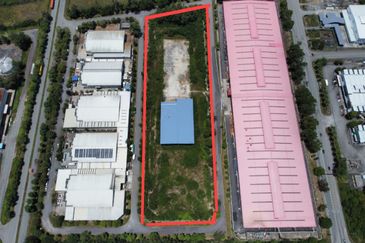
Nilai Utama Enterprise Park
Nilai, Negeri Sembilan
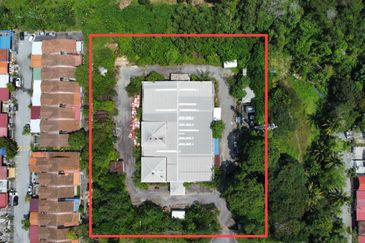
FACTORY WAREHOUSE AT NILAI NEGERI SEMBILAN
Nilai, Negeri Sembilan

Sri Petaling KL 1st Flr Shop For Rent
Bandar Baru Sri Petaling, Kuala Lumpur
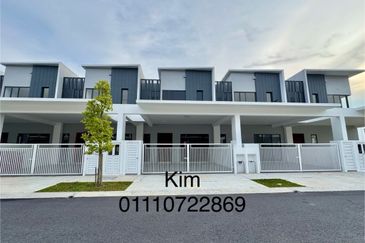
Azalea @Resort Residence 2
Seremban, Negeri Sembilan
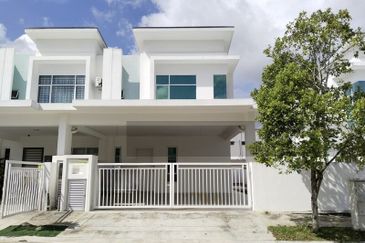
ARA SENDAYAN @ BANDAR SRI SENDAYAN
Seremban, Negeri Sembilan
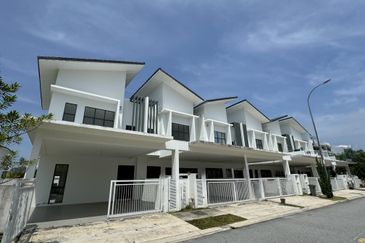
HIJAYU 2 - RESORT HOMES
Seremban, Negeri Sembilan
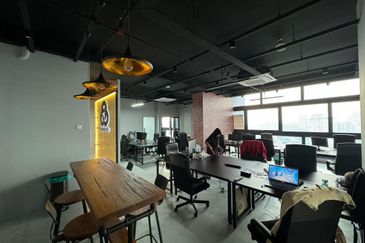
Millerz Square
Jalan Klang Lama (Old Klang Road), Kuala Lumpur


